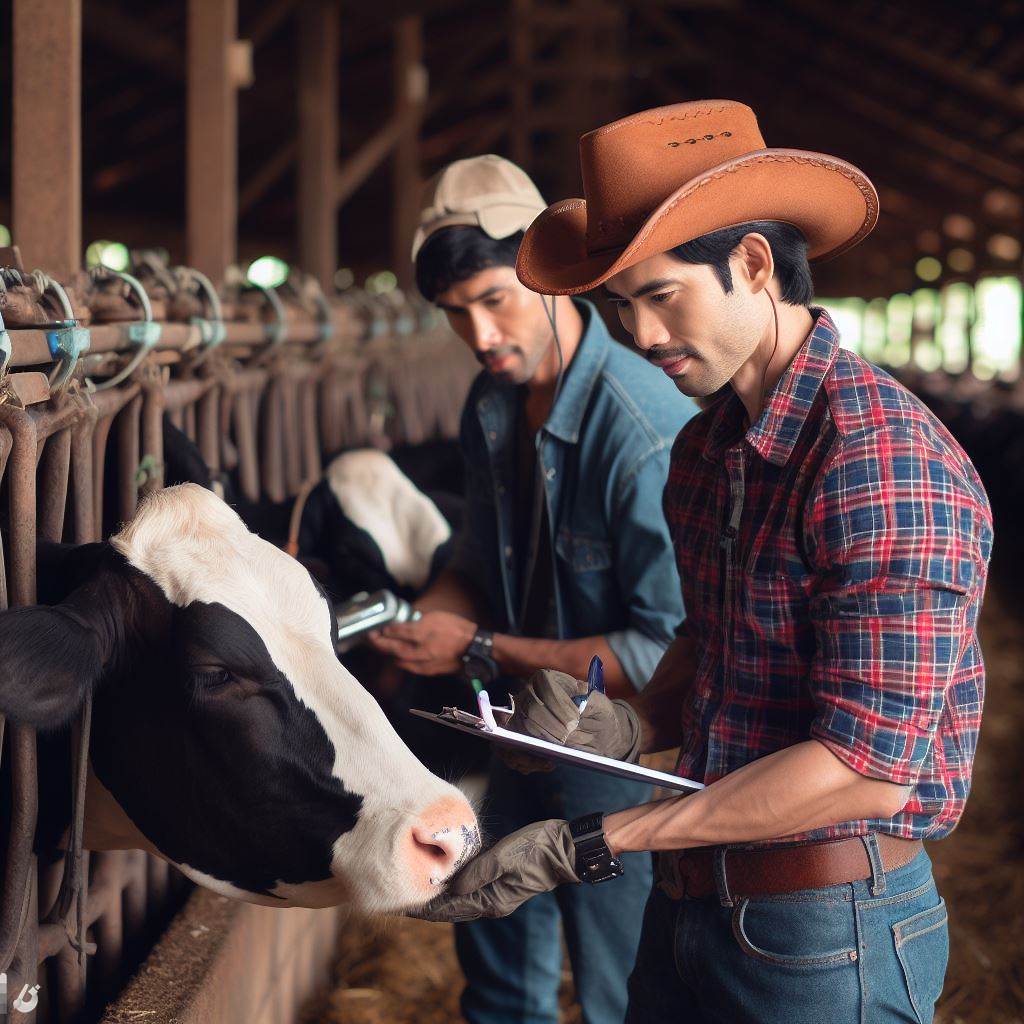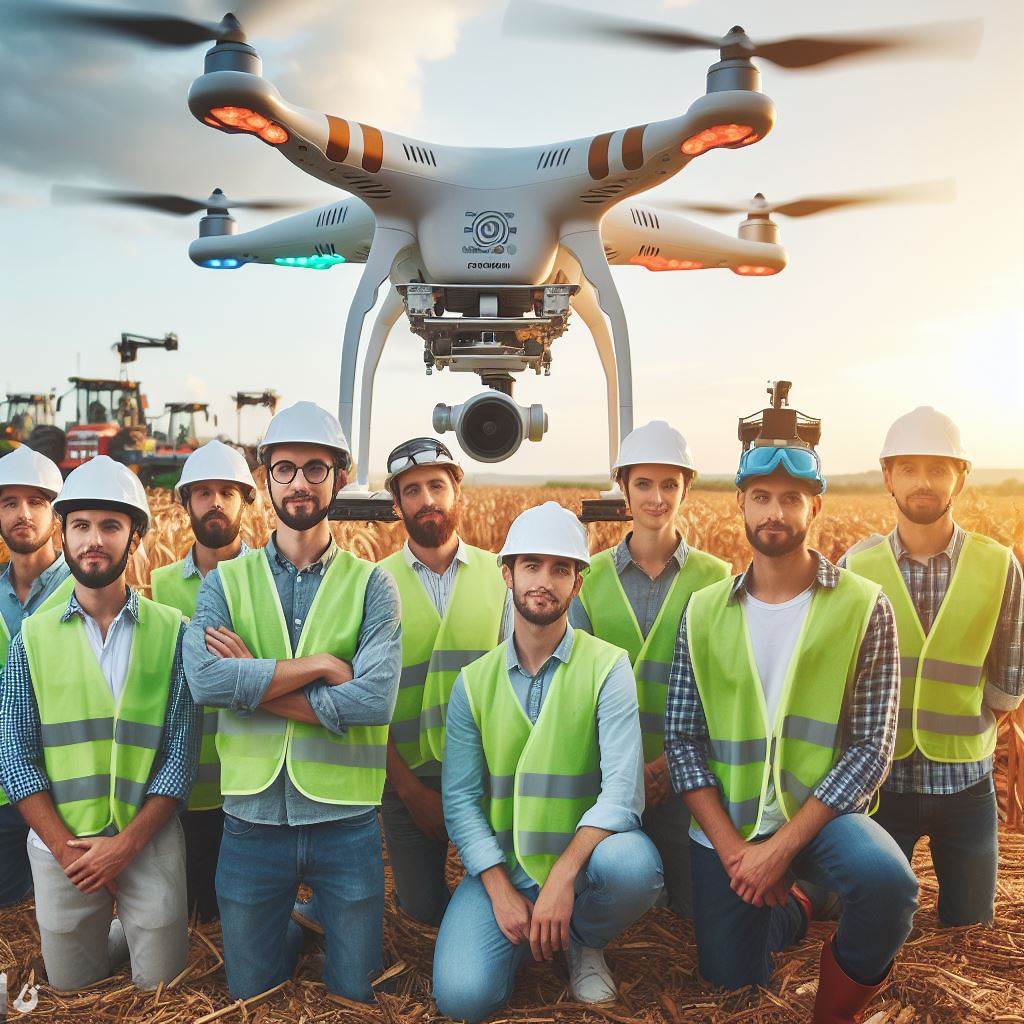Introduction
Climate-smart agriculture increases productivity, reduces greenhouse gas emissions, and enhances resilience by integrating innovative solutions such as:
- Precision farming with GPS-guided machinery.
- Drones optimizing resource use.
- Remote sensing for real-time data on soil moisture and weather conditions.
- Climate information systems delivering timely forecasts.
Climate change threatens global agriculture, impacting food security, livelihoods, and sustainability. This approach is crucial as it:
- Adapts to changing climatic conditions.
- Contributes to climate change mitigation efforts.
Agriculture heavily depends on climate patterns, affecting crop growth and yield. Changes in these patterns directly impact:
- Food production and availability.
- Livelihoods and environmental sustainability.
The agricultural sector significantly contributes to greenhouse gas emissions through deforestation, livestock farming, and chemical fertilizers. By implementing climate-smart practices, farmers:
- Reduce emissions.
- Contribute to global climate change combat.
Genarally, embracing climate-smart agriculture with innovative agri-tech solutions is vital for building resilience, reducing emissions, and ensuring sustainable food production in the face of climate change.
This approach leads to a sustainable and resilient future for agriculture.
Impact of Climate Change on Agriculture
Increasing weather variability and its effects on crop production
- Droughts and water scarcity: Reduced water availability leads to lower crop yields and compromised plant health.
- Heatwaves and increased evaporation: Extreme heat stresses crops, increases water needs, and affects pollination and fruit development.
Rising temperatures and its impact on crop yields
As temperatures rise, crop yields decrease due to reduced photosynthesis, increased respiration rates, and higher risk of pests and diseases.
Changing precipitation patterns and their influence on agricultural practices
Alterations in rainfall patterns affect planting and harvesting schedules, water management, and the prevalence of crop diseases.
Climate-Smart Agriculture: Technological Solutions
Precision farming and remote sensing technologies
Utilizing drones and satellite imagery to monitor crop health, optimize irrigation, and detect early signs of pest infestations.
Hydroponics and vertical farming
Growing crops without soil using nutrient-rich water solutions and vertical structures to maximize land use and minimize water consumption.
Agroforestry and intercropping techniques
Planting trees alongside crops to provide shade, minimize soil erosion, improve biodiversity, and promote sustainable land management.
Climate-resilient seed varieties
Developing and cultivating climate-resistant crop varieties that can withstand extreme weather conditions and maintain yields.
Integrated pest management
Implementing techniques such as biological controls, crop rotation, and trap crops to reduce the reliance on chemical pesticides and prevent pest outbreaks.
Water management systems
Adopting efficient irrigation methods like drip irrigation and rainwater harvesting to conserve water resources and mitigate water scarcity.
Climate information services
Facilitating access to weather forecasts, climate data, and advisory services to help farmers make informed decisions and plan their farming activities.
Transform Your Agribusiness
Unlock your farm's potential with expert advice tailored to your needs. Get actionable steps that drive real results.
Get StartedCapacity building and knowledge exchange
Providing training programs and platforms for farmers to develop climate-smart agricultural practices and share their experiences and knowledge.
Harnessing Technology for Climate-Smart Agriculture
Climate-smart agriculture technologies play a crucial role in mitigating the impact of climate change on agriculture, ensuring food security, and promoting sustainable farming practices.
Read: Soil Sensors: Enhancing Crop Yield Insights
Role of Technology in Climate-Smart Agriculture
Technological advancements driving change
- Precision agriculture: Modern techniques such as GPS and sensors enable precise application of inputs.
- Remote sensing and satellite imagery: High-resolution images help monitor crop health, water availability, and soil conditions.
- Internet of Things (IoT): Connected devices collect data to optimize irrigation, pest control, and farm management.
- Artificial intelligence and machine learning: Algorithms analyze data to make accurate predictions and automate farm operations.
Benefits of using technology in climate-smart agriculture
- Improved resource management: Technology allows farmers to monitor water usage, minimize waste, and conserve resources.
- Adaptability and resilience: Advanced tools help farmers respond to changing weather patterns and minimize yield losses.
- Optimized productivity and efficiency: Technology enables precise planning, forecasting, and decision-making for enhanced yield and profits.
Technology proves indispensable in climate-smart agriculture, offering tools like precision agriculture, IoT, and AI, empowering farmers with:
Precision Agriculture
- Uses GPS and sensors for precise application of inputs.
- Reduces waste and optimizes resource utilization.
Remote Sensing and Satellite Imagery
- Provides real-time insights into crop health, water availability, and soil conditions.
- Informs decisions on irrigation, nutrient application, and pest control, leading to better yields.
Internet of Things (IoT)
- Connects devices to monitor environmental parameters.
- Enables precise decisions on irrigation schedules and crop management, improving resource efficiency.
Artificial Intelligence (AI) and Machine Learning
- Analyzes data to make accurate predictions.
- Considers historical weather patterns, soil conditions, and crop data for informed decisions.
Technology benefits in climate-smart agriculture include:
- Improved resource management, reducing water usage and conserving resources.
- Enhanced resilience to climate change impacts, minimizing yield losses and ensuring a steady income.
Moreover, technology boosts productivity and efficiency on the farm by:
- Enabling precise planning based on weather conditions, soil health, and market demand.
- Automating farm operations, saving time and labor for farmers.
Therefore, technology is imperative in climate-smart agriculture, providing actionable insights and tools for resource management, adaptation, and productivity optimization.
Embracing technology is necessary for combating climate change and ensuring food security.
Read: CRISPR in Agriculture: Editing Crop Genes

Gain More Insights: Drone Tech in Pest Control: A Study
Gain More Insights: Self-Driving Tractors: Farming Made Easy
Examples of Climate-Smart Agri-Tech Solutions
Crop and soil monitoring systems
- Sensor-based irrigation management optimizes water usage and minimizes wastage.
- Soil moisture sensors help farmers determine the ideal watering levels for their crops.
- Drones and satellites aid in monitoring crop health and identifying areas that require attention.
Climate and weather forecasting tools
- Accurate prediction models enable farmers to make better-informed decisions regarding their crops.
- Early warning systems alert farmers to extreme weather events, allowing them to take necessary precautions.
Sustainable farming practices through technology
- Precision nutrient management ensures that crops receive optimum nutrients and minimizes waste.
- Conservation tillage techniques help reduce soil erosion and enhance soil health.
- Climate-smart livestock management techniques promote sustainable and efficient animal farming practices.
The world is facing the immense challenge of climate change, which poses substantial risks to agriculture, food security, and rural livelihoods.
However, technological advancements offer promising solutions in the realm of agriculture referred to as climate-smart agri-tech.
These innovative approaches provide farmers with tools to adapt and mitigate the impacts of climate change, ultimately ensuring food production sustainability.
Crop and soil monitoring systems
One of the key facets of climate-smart agri-tech is the application of crop and soil monitoring systems.
Sensor-based irrigation management plays a crucial role in optimizing water usage on farms, minimizing wastage, and ensuring crops receive adequate irrigation.
By using soil moisture sensors, farmers can accurately determine the water requirements of their crops, further enhancing water efficiency.
Additionally, the use of drones and satellites enables real-time crop health monitoring, allowing farmers to identify stressed or damaged areas and respond promptly.
Climate and weather forecasting tools
Accurate prediction models are essential for farmers to make informed decisions.
With climate and weather forecasting tools, farmers can better anticipate changes in weather patterns and adapt their agricultural practices accordingly.
These models help optimize the timing of planting, harvesting, and other agronomic activities, reducing vulnerability to climate-related risks.
Furthermore, early warning systems for extreme weather events, such as hurricanes or droughts, provide farmers with timely alerts to protect their crops and livestock.
Sustainable farming practices through technology
Technology also plays a vital role in promoting sustainable farming practices.
Precision nutrient management enables farmers to apply fertilizers and other nutrients precisely to their crops, ensuring maximum absorption and minimizing environmental pollution caused by excess fertilization.
Showcase Your Farming Business
Publish your professional farming services profile on our blog for a one-time fee of $200 and reach a dedicated audience of farmers and agribusiness owners.
Publish Your ProfileConservation tillage techniques, such as no-till farming or reduced tillage, reduce soil erosion and promote better soil health, retaining moisture and improving nutrient retention.
Climate-smart livestock management practices integrate technology, including advanced monitoring systems and data management tools, to optimize animal health, improve resource efficiency, and reduce greenhouse gas emissions.
In short, climate-smart agri-tech presents a significant opportunity to tackle the challenges posed by climate change in the agricultural sector.
Crop and soil monitoring systems, climate and weather forecasting tools, and sustainable farming practices through technology are just a few examples of the solutions available.
By embracing these innovative technologies, farmers can enhance their productivity, resilience, and sustainability while minimizing the impact of climate change on agriculture.
It is imperative that governments, researchers, and farmers collaborate to promote the adoption of climate-smart agri-tech on a global scale for a more secure and sustainable future.
Read: Automated Tractors: The Future of Ploughing
Delve into the Subject: Biochar: Revolutionizing Soil Management
Delve into the Subject: Precision Agri: Boosting Yield Sustainably
You Might Also Like: Sustainable Agri: Biotech’s Green Edge
Barriers and Challenges
Cost implications of implementing climate-smart agri-tech
One major barrier to the widespread adoption of climate-smart agri-tech is the high cost involved.
Implementing these technologies requires significant financial investments.
Farmers may struggle to afford the initial setup costs, including purchasing equipment and implementing new practices.
Additionally, maintaining and upgrading the technology can also be expensive over time.
Without financial support, many farmers may not be able to adopt climate-smart agri-tech, limiting its impact.
Lack of awareness and technical knowledge among farmers
Another challenge is the limited awareness and technical knowledge among farmers regarding climate-smart agricultural technologies.
Many farmers are not aware of the potential benefits of using these technologies to mitigate climate change impacts.
There is a need for training programs and educational initiatives to disseminate knowledge and increase awareness.
Farmers should be provided with information on the latest agri-tech solutions and their potential benefits.
Without proper awareness and knowledge, farmers may not understand the importance and effectiveness of these technologies.
Infrastructural limitations in accessing technology in rural areas
Access to technology is another significant barrier, particularly in rural areas with limited infrastructure.
In many developing countries, rural communities lack access to reliable electricity and internet connectivity.
Climate-smart agri-tech relies heavily on digital technologies, sensors, and data analysis.
Without adequate infrastructure, farmers in these areas may not be able to access or benefit from these technologies.
Investments in rural infrastructure are necessary to bridge this digital divide and ensure equal opportunities for all farmers.
Regulatory frameworks and policy support required
A crucial challenge in the adoption of climate-smart agri-tech is the lack of supportive regulatory frameworks and policies.
Governments and policymakers need to establish clear guidelines and regulations to encourage the use of these technologies.
These frameworks should address issues such as data sharing, intellectual property rights, and privacy concerns.
Additionally, financial incentives and subsidies can further promote the adoption of climate-smart agri-tech.
Without a favorable regulatory environment, farmers may hesitate to invest in these technologies.
In essence, while climate-smart agri-tech holds enormous potential in combating climate change and ensuring food security, several barriers and challenges must be addressed.
The cost implications, lack of awareness and technical knowledge, infrastructural limitations, and regulatory frameworks all need attention.
Governments, organizations, and stakeholders must work together to overcome these barriers and create an enabling environment for the widespread adoption of climate-smart agri-tech.
By addressing these challenges, we can harness the power of technology to build a sustainable and resilient agricultural sector.
Read: Agri Solar Panels: Powering Farms Sustainably
Explore Further: Hydroponics & Aquaponics: Tech Insights
See Related Content: Automated Harvesters: The Future of Farming
Conclusion
Recap of climate-smart agri-tech as a solution against climate change
Climate-smart agri-tech offers innovative solutions to combat the effects of climate change on agriculture.
It involves the integration of advanced technologies, such as precision agriculture, drones, and data analytics, to optimize agriculture practices and increase productivity while reducing environmental impact.
Importance of collaboration between farmers, technology developers, and policymakers
Collaboration among farmers, technology developers, and policymakers is crucial for the successful implementation of climate-smart agri-tech.
Showcase Your Farming Business
Publish your professional farming services profile on our blog for a one-time fee of $200 and reach a dedicated audience of farmers and agribusiness owners.
Publish Your ProfileBy working together, these stakeholders can share knowledge, expertise, and resources, and develop policies that promote the integration of climate-smart technologies in agricultural systems.
Encouragement for farmers to adopt climate-smart agri-tech practices for sustainable agriculture
Farmers play a vital role in driving the adoption of climate-smart agri-tech practices.
They can benefit from increased yields, improved efficiency, and reduced input costs, while contributing to climate change mitigation and adaptation efforts.
It is essential to provide farmers with training, information, and financial support to facilitate the adoption of these technologies.
In conclusion, climate-smart agri-tech holds great promise in the face of climate change.
Its ability to harness technology and innovation for sustainable agriculture makes it a powerful tool in combating the challenges posed by a changing climate.
By embracing collaboration and empowering farmers, we can build a resilient and climate-resilient food system for the future.




